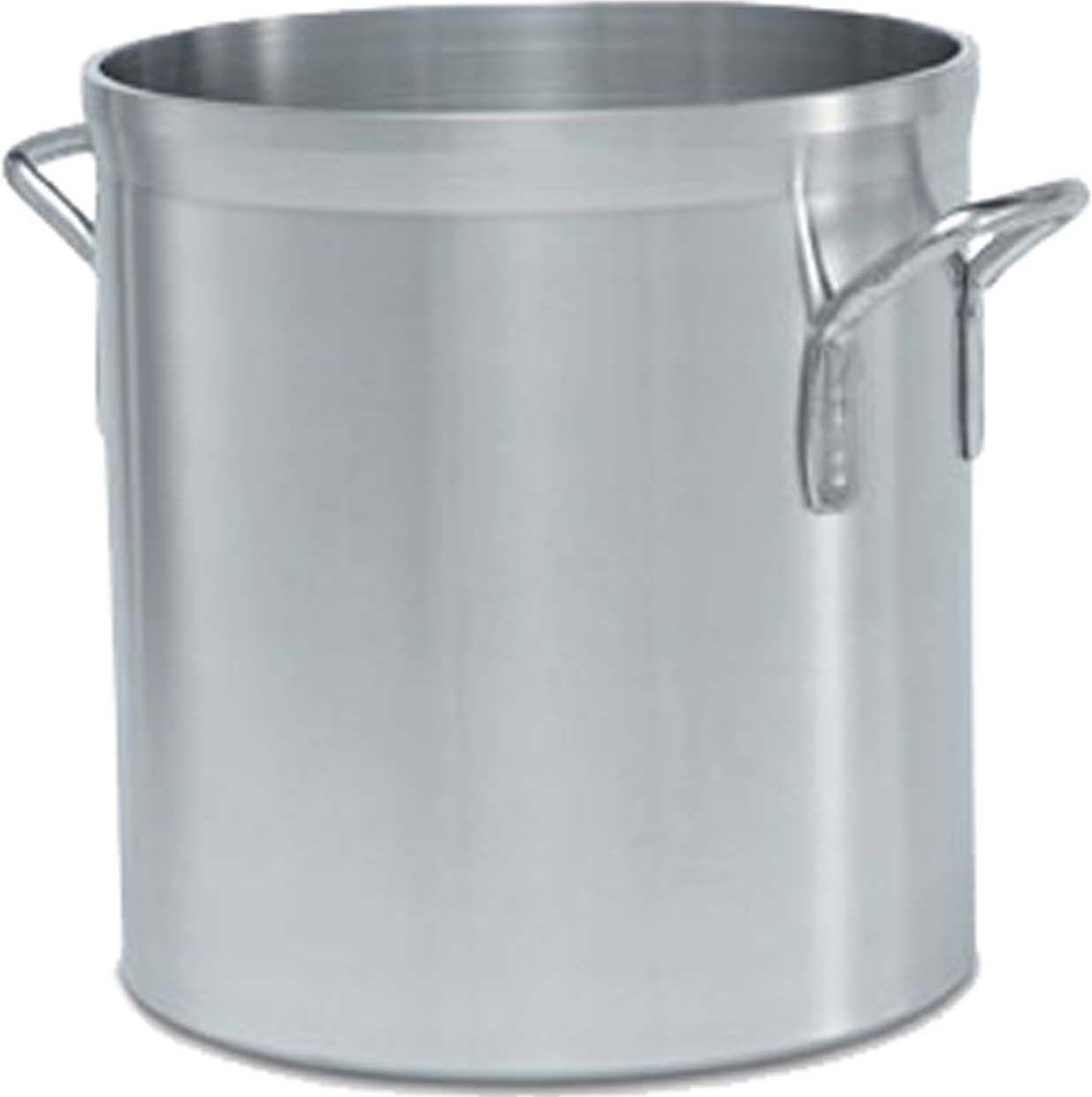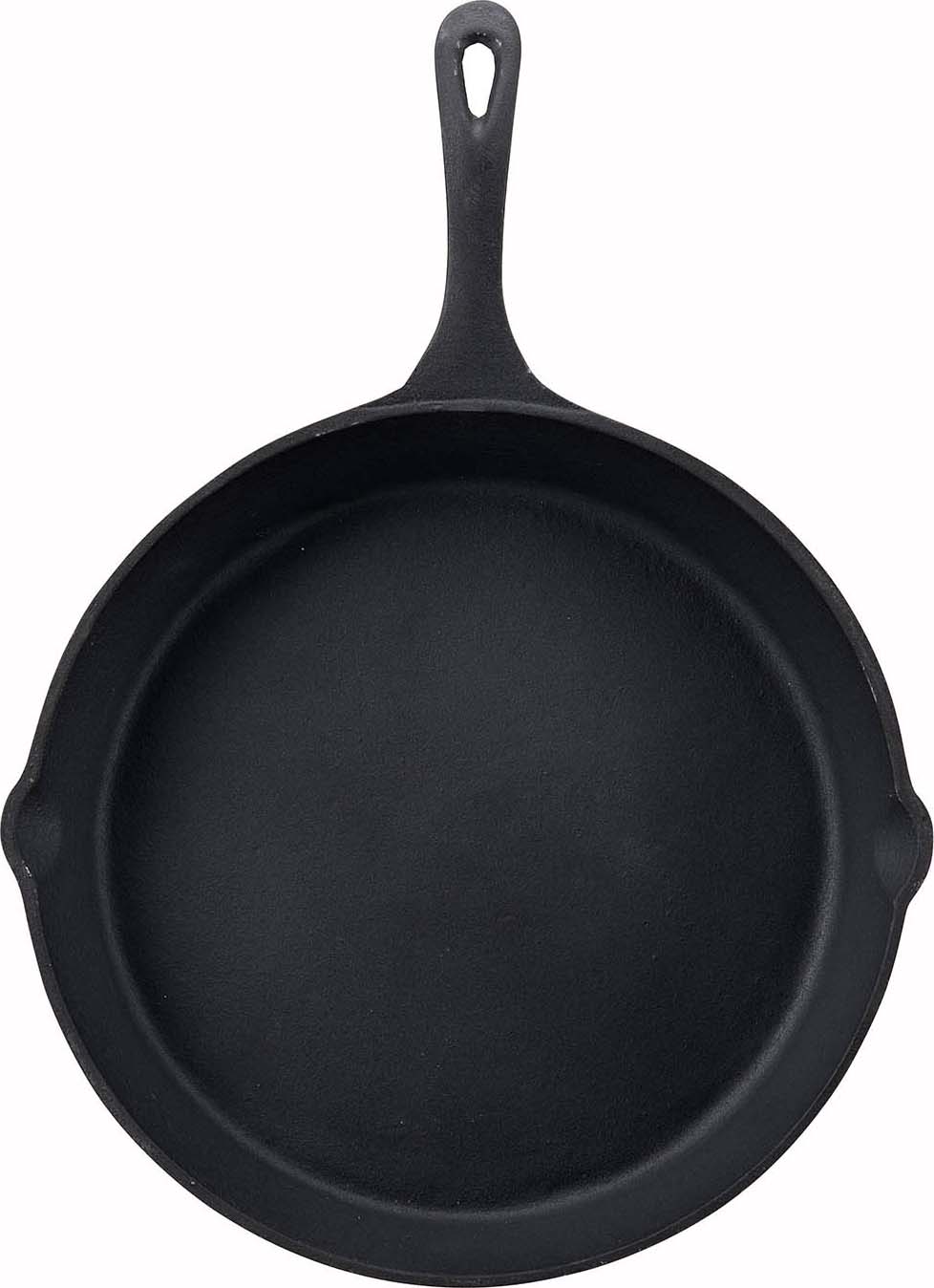
It’s essential to use the proper cookware material if you want your commercial kitchen to fulfill its potential. Pots and pans can be made from a variety of materials which include copper, aluminum, cast iron, carbon steel, and stainless steel. Some cookware boast non-stick materials, while others are induction-ready. Each metal can differ significantly. While some are lightweight and easy to handle, others are more heavy-duty and durable. Heat conductivity is another characteristic that can vary from one material to the next.
With so many options, it’s easy to be overwhelmed by the myriad of choices. But by educating yourself about the strengths of weaknesses of each material, you’ll put yourself in the best situation to outfit your kitchen with the ideal cookware. Whether you’re buying saute pans, sauce pans, fry pans, stock pots, or induction-ready cookware, this guide can help you identify what material will fare best in your specific kitchen.
Aluminum
Aluminum the most commonly used material for pots and pans is lightweight and inexpensive. Heating quickly and evenly, the metal can heat up from room temperature to cooking temperature in very little time. Aluminum also cools down quickly, which means food can be left in a pot or pan and won’t continue to cook after your range is turned off.
Out of the most popular cookware materials, aluminum is the softest and most porous. So while the metal heats up rapidly, it’s also more prone to burning food than other types of pots and pans. This means chefs need to diligently watch meals while they cook. Aluminum’s make-up also puts pots and pans at risk of warping if they’re heated for excessively long periods of time.
While aluminum is great for boiling water, soups, and stocks, the metal isn’t ideal for slow-cooking since its porous make-up can transfer flavor between different foods. Aluminum can also pit and discolor if it’s used to cook acidic food. If your cookware will be on display, it’s important to know aluminum can stain which affects the metal’s aesthetic appeal but not its functionality.
Aluminum Advantages
- ➤ Inexpensive
- ➤ Lightweight
- ➤ Heats and cools rapidly
Aluminum Disadvantages
- ➤ Prone to warping
- ➤ Flavors may transfer between meals
- ➤ Not good for acidic foods
Stainless Steel

Durable and easy to clean, stainless steel is stain-, scratch- and dent-resistant. The heavy-duty material is best-suited for high-volume commercial kitchens that continuously use pots and pans. Conducting heat at a moderate rate, stainless steel takes longer than aluminum items to heat up. But after a stainless steel pot or pan has reached its desired temperature, it does an excellent job of retaining heat. The low reactivity of stainless steel makes it great for cooking acidic foods and sauces both of which stainless steel won’t discolor.
Maintaining a beautiful exterior glow for much longer than other materials, stainless steel is ideal for restaurants whose kitchens are visible to customers. Since stainless steel isn’t porous, you won’t have to worry about flavors being transferred between dishes. Usually the material has a stick-resistant finish that excels at frying and sautéing.
There are a few downsides to stainless steel pots and pans. Since stainless steel is not a great conductor of heat, it often has unwanted hold or cold spots. This means the material isn’t so well-suited for braising, roasting, and slow-cooking.
Stainless steel is labeled with a ratio that signifies the amount of nickel and chrome. An 18/8 gauge stainless steel has 18% chrome and 8% nickel, while a 20 gauge stainless steel has 20% chrome and zero nickel. Although chrome and nickel make stainless steel more durable, they also decrease its heat conductivity.
Stainless Steel Advantages
- ➤ Simple to clean
- ➤ Resists dents and stains
- ➤ Retains heat extremely well
- ➤ Ideal for acidic foods
Stainless Steel Disadvantages
- ➤ Generally more expensive
- ➤ Takes longer to heat up
- ➤ Can have hot or cold spots
Copper
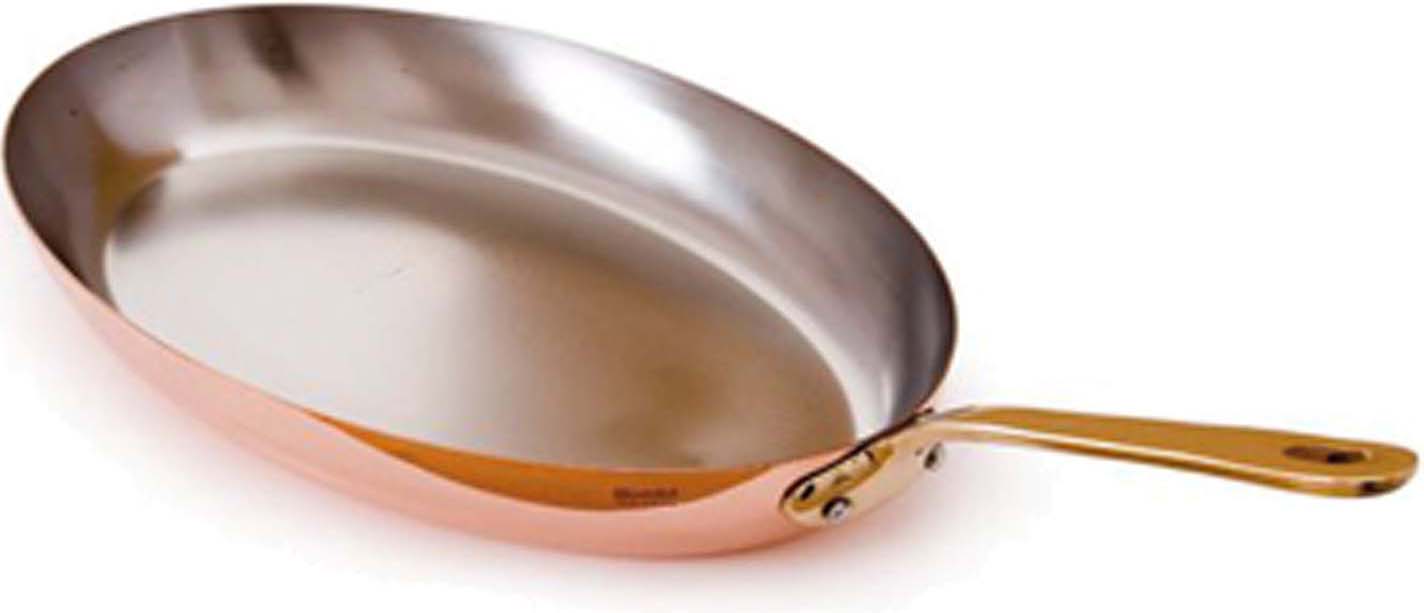
offers the benefit of superior heat conduction, which means it both heats and cools rapidly even more rapidly than aluminum. This characteristic makes copper an ideal material for cooking meals that require precise temperatures. Visually appealing, copper can discolor if used over gas burners. While this discoloration isn’t ideal for the pots’ and pans’ aesthetic appeal, it has no impact on copper’s functionality as cooking material. By consistently maintaining your copper cookware with a proper cleaning regimen, you can help ensure it remains aesthetically pleasing.
Easy to damage and a little on the pricier side, copper is best suited for experienced kitchen staff that will treat copper cookware with due care. Thanks to its visually pleasing exterior, copper is ideal for kitchens that are visible to customers and hibachi-style restaurants where meals are cooked table side. Most copper pots and pans are conveniently lined with stainless steel to prevent food from discoloring.
Copper Advantages
- ➤ Heats and cools quickly
- ➤ Aesthetically pleasing
Copper Disadvantages
- ➤ More costly than other material
- ➤ Prone to damage
Carbon Steel
As its name suggests, carbon steel is an alloy made from steel and carbon. Ideal for caramelizing sugar and giving meat an appealing golden-brown hue, carbon steel is both strong and durable. While carbon steel is generally heavier than stainless steel and aluminum, it’s also easy to produce and consequently inexpensive. The material is commonly used for stir frying and excels at searing both delicate and thick items. Most of the highest quality woks are made of carbon steel. With proper maintenance, carbon steel cookware develops a non-stick surface as a result of cooked-on oils.
Carbon Steel Advantages
- ➤ Strong, heavy, and durable
- ➤ Ideal for stir-frying
- ➤ Non-stick surface develops naturally if properly cared for
- ➤ Inexpensive
Carbon Steel Disadvantages
- ➤ Heavy
- ➤ Non-stick seasoning needs regular maintenance
Cast Iron
Perfect for cooking fajitas, Paninis, and crepes, cast iron is a heavy material that heats and cools slowly. This also means that the material excels at retaining heat. Whether you’re searing steaks to perfection or baking fresh desserts, a cast iron skillet is fit for the job. The material is great for cooking nearly anything although acidic foods and sauces have a tendency to weaken the cookware’s seasoning and give food an unwanted metallic flavor.
While cast iron was previously incapable of being washed in a dishwasher, a lot of modern cast iron cookware is easy to clean and dishwasher safe. And contrary to popular belief, the majority of cast iron cookware is pre-seasoned with a coating. As long as you take proper care of cast iron by washing it regularly, seasoning won’t need to be reapplied.
Cast Iron Advantages
- ➤ Retains heat well
- ➤ Extremely durable
- ➤ Comes with a pre-seasoned, non-stick surface
Cast Iron Disadvantages
- ➤ Seasoning needs to be properly maintained
- ➤ Acidic foods weaken seasoning
- ➤ Generally not dishwasher safe
Non-Stick Cookware
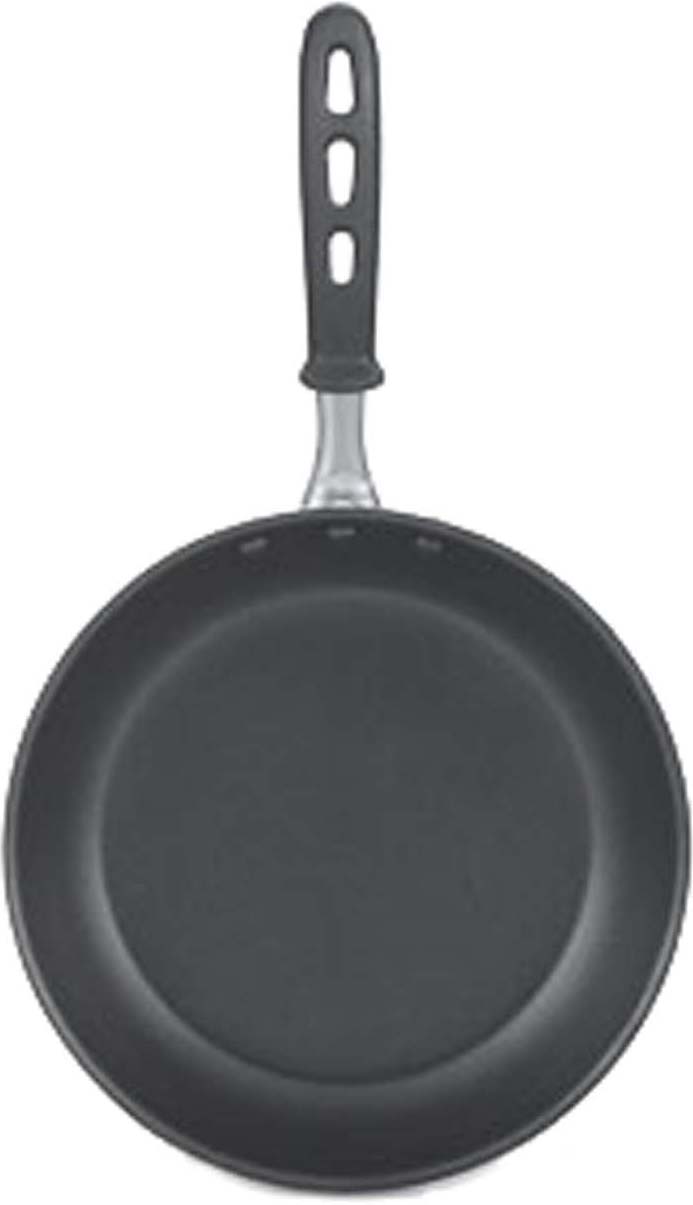
The popularity of non-stick cookware has grown in both residential and commercial kitchens. Enabling easy clean-up and allowing chefs to cook with minimal fat and butter, non-stick fry pans are ideal for frying fish, searing meat, and making omelets. Kitchens that lack the labor or resources necessary to consistently maintain the seasoning of steel or iron cookware are best-suited for non-stick pots and pans. Although non-stick pans are generally dishwasher safe, most manufacturers recommend hand washing to extend the product’s lifespan.
While exclusively using plastic and silicone utensils can prolong the lifespan of non-stick cookware, synthetic coatings will wear off eventually. Ceramic coating offers the same benefits of traditional non-stick cookware while also lasting longer.
Non-stick Advantages
- ➤ Easy maintenance
- ➤ Mostly dishwasher safe
- ➤ Enables chefs to cook with less fat
Non-stick Disadvantages
- ➤ Shorter lifespan
- ➤ Not great for browning dishes or high-temperature cooking
Induction Cookware
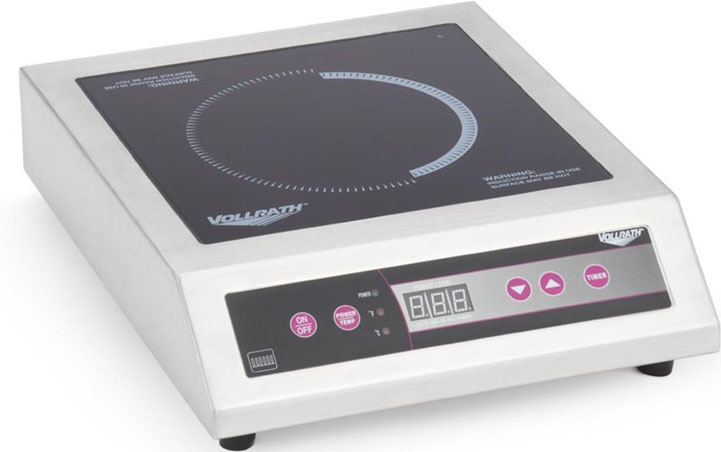
If your commercial kitchen has an induction range, make sure to get induction-ready cookware. Materials like aluminum and copper are not capable of induction cooking unless the manufacturer has inserted a magnet into the build. If you don’t know whether cookware is induction-ready or not, try sticking a magnet to it. If the magnet sticks, the pot or pan is induction-ready.
The type of cookware that’s best suited for your commercial kitchen will depend on a variety of factors. One such factor is whether your kitchen is visible to customers. Others include cooking volume and staff size. Since different foods cook best over different types of material, it’s a good idea to stock your kitchen with cookware that accommodates your menu. Nobody knows your operation better than you do. So take everything into consideration before making a well-informed decision regarding your kitchen’s cookware material.

